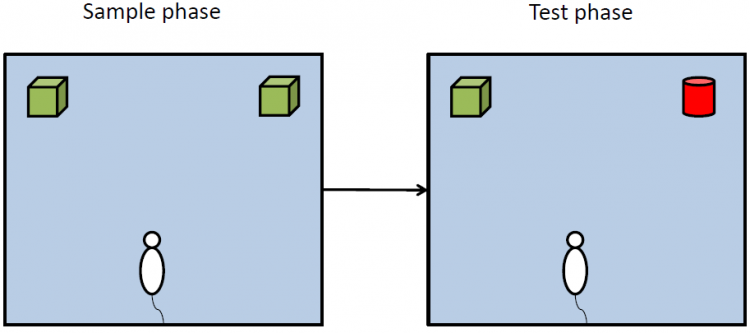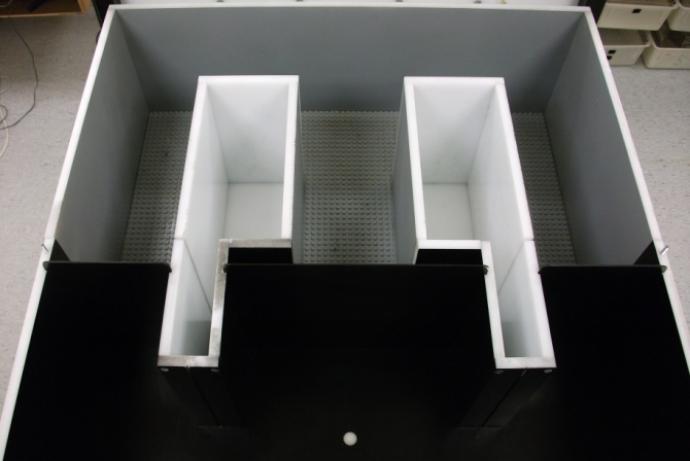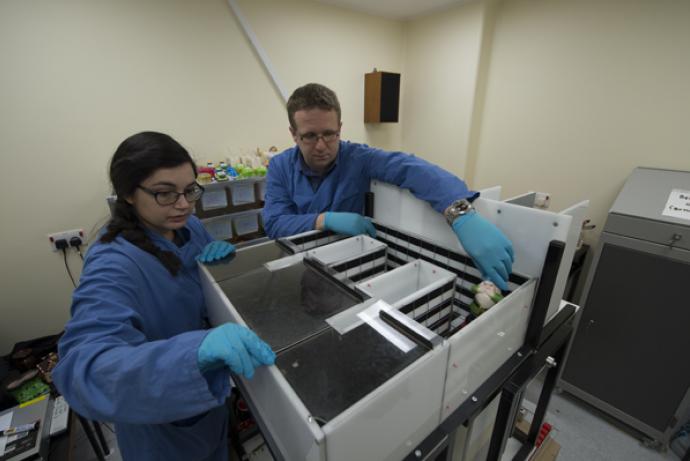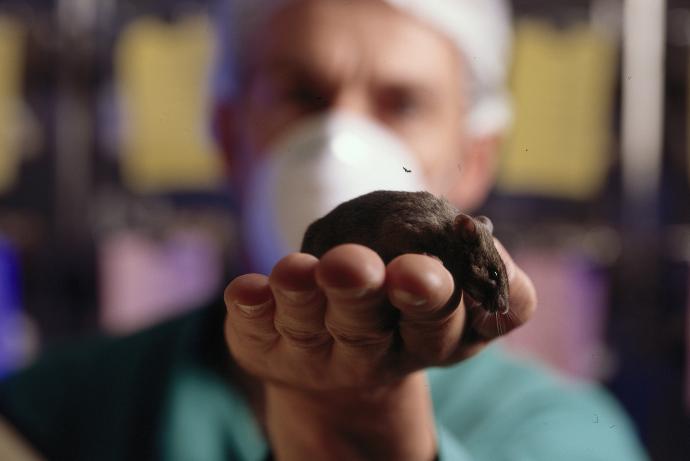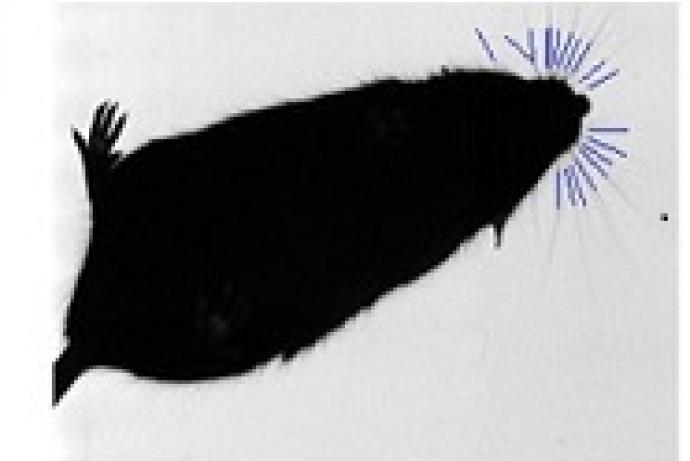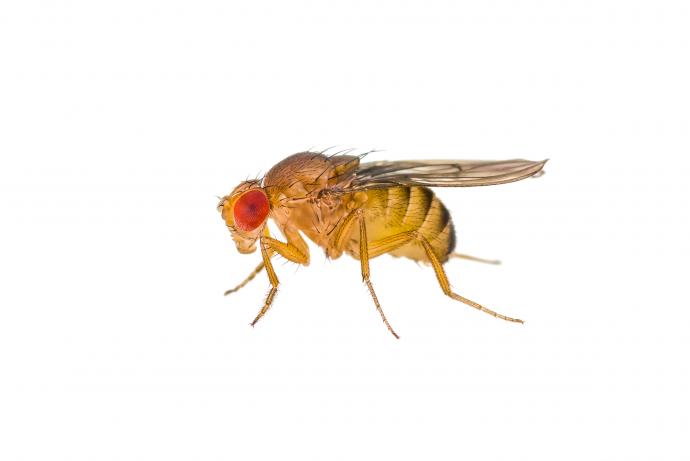Researchers at Durham University have developed a semi-automated ‘continual trials’ approach for spontaneous object recognition tasks, in which an animal can complete many trials in a single session (rather than the typical single trial). This leads to more reliable behavioural data, more sensitive measures of performance and a reduction in the number of animals required to give the same statistical power. Partnership is sought with a variety of users who can help further develop and validate the apparatus.
The Solution provider has been awarded CRACK IT Solutions funding to collaborate with researchers across four universities (St Andrews University, University of Edinburgh, Open University and Bristol University) to expand the application of the semi-automated continual trials apparatus.
Spontaneous tasks of recognition memory are often run such that only one trial a day is collected for each animal. These tasks are often carried out using a single arena with the animal being isolated from the group and handled during delays (whilst objects are being changed) and between trials (which are typically run on different days), increasing anxiety in the animals and affecting reproducibility of the data.
By adapting the approach taken in running these tasks it is possible to collect many trials from a single animal in a single session, reducing the stress the animal experiences and increasing the reliability of the model in comparison to the traditional one trial a day approach. There are technologies available to enable multiple spontaneous recognition trials to be carried out in a single session (e.g. Albasser et al., 2010; Furtak et al., 2009), but none have combined the use of a single testing chamber that the animal enters from the same direction on each trial and real 3D objects. The inclusion of both these features in a continual trials apparatus would make the results more comparable to the existing literature on spontaneous recognition memory (primarily carried out using single trial a day procedures), increasing the model’s applicability in relation to previous findings.
Researchers at Durham University have developed a method and demonstrated the effectiveness of using their manual continual trials apparatus for long term memory studies. The apparatus allows the use of substantial (24h) delays between sample phase (familiarisation with objects) and test phase (introduction of novel object) (see figure below), whilst retaining the benefits of the continual trials approach, by running all sample phases on day 1 and all test phases on day 2. This increases the number of long term memory studies it is possible to run with one animal in 24 hours, improving the reliability of the data acquired. The team has also demonstrated the viability of the use of a spontaneous task of the clinically relevant episodic memory (what, where, which memory) using this same continual trials approach. Validation of both these approaches in an automated version of the apparatus would increase both the usability of the apparatus (and therefore overall reduction in animal numbers used in these tasks) and the effectiveness of translation of results from these tasks to the clinic by assessing more relevant forms of memory.
References:
- Albasser MM, Chapman RJ, Amin E, et al. (2010) New behavioral protocols to extend our knowledge of rodent object recognition memory. Learning & Memory 17(8): 407-19. doi: 10.1101/lm.1879610.
- Furtak SC, Cho CE, Kerr KM, et al. (2009) The floor projection maze: A novel behavioral apparatus for presenting visual stimuli to rats. Journal of Neuroscience Methods 181(1): 82-88. doi: 10.1016/j.jneumeth.2009.04.023.
Researchers at Durham University and Campden Instruments have developed the manual continual trials apparatus into a semi-automated version and have validated its effectiveness in both rats and mice on object recognition and object location memory. The manual apparatus was developed with the aid of GSK Shanghai, with reference to the commercial working practice of running spontaneous recognition procedures (Chan et al., submitted). This indicates that the automated system developed with Campden Instruments is likely to be highly suitable to both a commercial and academic research environment.
This apparatus provides a testing chamber in which the animal can explore objects and a holding chamber where the animal rests whilst objects are changed. At the start and end of each timed period an automatic door opens between the two chambers to allow the animal to shuttle between them without being handled. When the animal is in the holding chamber, objects can be removed or changed in the testing chamber without disturbing the animal. The commercial offering of the apparatus will provide training on the animal habituation methods as well as the control software, and users will be provided with clear standard operating procedures (SOPs) for behavioural tasks. As a result, the spontaneous tasks of recognition will be standardised across laboratories for the first time, which is likely to have a significant impact on reproducibility and reliability.
The apparatus incorporates a camera to capture the animal’s behaviour throughout its time in the testing chamber for scoring later and a prototype behaviour scoring app. Further development of the app associated with the video apparatus would enable the testing sessions to be scored faster than standard methodologies and automated scoring would reduce the subjectivity of manual scoring. Initial plans for the commercial product include apparatus to suit all budgets, ranging from a starter product that has a user operated manual gate and manual scoring to an advanced product that is totally automated (automated gate, food delivery and scoring of behaviour).
This technology will be of interest to groups looking for standardised tests of memory to produce behavioural phenotypes of rodent models as well as the effects of interventions hypothesised to influence memory function.
Partnership is sought with a variety of users who can help further develop and validate the apparatus in numerous ways, including (but not limited to):
- Assessing the feasibility of a single experimenter running multiple apparatuses simultaneously, to enable increased throughput in these tasks and improve the usability of the apparatus.
- Maximising the data that can be extracted (manually or otherwise) from the recorded behaviour, to enable researchers to quickly and accurately score behaviour in a reliable manner.
- Further validating the manual version of this apparatus, namely the use of delays between sample phase and test phase in object recognition and the appropriateness of the apparatus for use in assessing the effects of pharmacological manipulations of memory.
- Trialling the behavioural scoring app in an operational environment, to provide advice and feedback that support improvement of the system for the target audience.
Partners will benefit from access to the apparatus and will be able to help shape the development of the apparatus through their feedback.
This continual trials apparatus makes performance more reliable, therefore reducing the number of animals required to achieve statistical significance in studies of spontaneous recognition. In both rats and mice, the researchers have shown that they can reduce the number of animals required for standard tasks from 16 animals per group to eight (Ameen-Ali et al., 2012; Chan et al., submitted). This has reduced the number of animals used in their research group by approximately 100 animals in the last three years. Adoption of this apparatus would produce at least a 40% reduction in animal use worldwide for these studies.
The apparatus also provides a marked refinement in procedure, as animals do not undergo handling between or within trials. This leads to more reliable behavioural measures and a significant reduction in behavioural ‘noise’ in the data. Reducing the 'noise' in the data from these experiments provides additional sensitivity, improving reliability and reproducibility, and adding to the overall reduction in animal usage. In addition, the provision of an automated apparatus with SOPs will provide consistency in the way these spontaneous recognition tasks are run across laboratories, providing clearer comparison in the data and in the long term a further reduction in the use of animals required to clarify inconsistent results.
References:
- Ameen-Ali KE, Eacott MJ and Easton A (2012). A new behavioural apparatus to reduce animal numbers in multiple types of spontaneous object recognition paradigms in rats. Journal of neuroscience methods 211(1): 66-76. doi: 10.1016/j.jneumeth.2012.08.006.
Overview
Having validated the effectiveness of the technology in both rats and mice on object recognition and object location memory, Dr Alex Easton sought collaborators to expand the application of the apparatus. With the support of CRACK IT Solutions funding Alex and Campden Instruments are now working with researchers across four universities (St Andrews University, University of Edinburgh, Open University and Bristol University) to:
- Assess the potential for running multiple apparatus simultaneously.
- Increase the amount of data extracted from a session using the integrated camera.
- Improve data scoring.
- Develop the apparatus for use in different experimental settings such as electrophysiology or optogenetic experiments.
The approach taken in running these tasks means it is possible to collect many trials from a single animal in a single session, reducing the inter-animal variability. The apparatus provides a marked refinement in procedure, as animals do not undergo handling between or within trials. The reduced handling and reduced inter-animal variability makes performance more reliable, reducing the number of animals required to achieve statistical significance in studies of spontaneous recognition.
